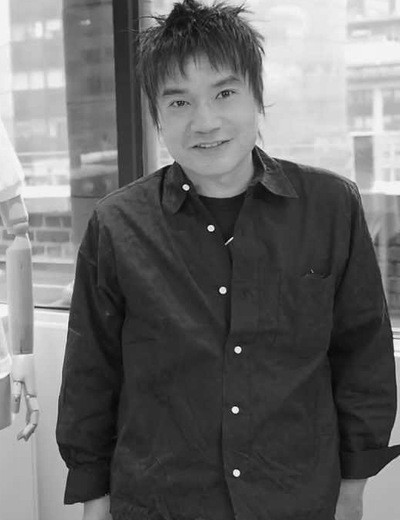
Hiroaki Ohya
About
Hiroaki Ohya is the creator and name of the Tokyo, Japan based fashion label OHYA.
Born in in Kumamoto in 1970, Hiroaki Ohya attended and graduated from Bunka Fashion College in 1992 before being quickly recruited and employed by Issey Misake and the Miyake Design Studio. In 1996, he started his line of clothing under the name Ohya Design Zoo Co Ltd, presenting in the Paris Collection that same year.
His earliest and most famous outlandish project was the Astroboy by Ohya collection, launched in 1999, based on the Astroboy anime and done in collaboration with show’s production company, Tezuka Productions.
Another conceptual project produced in 1999 showed Ohya’s interest in creating artistic projects more so than functional clothing that people can purchase. His Ohya The Wizard of Jeanz collection was a series of 21 books that would transform into clothing when they were unfolded. The basis for the idea was in the American film, The Wizard of Oz, and only 20 editions of the collection were produced, with a selling price of $5000 each. The collection brought him both acclaim for his artistic merit and criticism for his lack of practical application.
In a 2001 interview with JS’ Kjeld Duits, Ohya explained that he was inspired by an old biography of President Lincoln that he found at a New York flea market. For someone working in the fleeting fashion world, it was a revelation. “With a book,” he said, “you can see something from fifty years ago the way it was fifty years ago. My creations however vanish within half a year. Especially in Japan it is ‘produce, throw away, produce, throw away.’ I had the feeling that I was creating household garbage.
Another of Ohya’s design concepts utilizes the ubiquitous Cup noodles that populate store shelves throughout Japan. He called this 2000 collection Cup Mode and it consisted of Fashion Magazines that had been crafted of cotton, which converted into jackets.
The Look
His work has become well known around the world for its innovation and experimentation, often utilizing futuristic imagery and materials, influenced by everything Anime to Western film and literature. Largely seen as artistic works, Ohya’s designs are often not conceivably worn for every day purposes, but have become popular nonetheless for their artistic merit. A lot of his designs are not particularly wearable and many perceive his work as art rather than fashion.